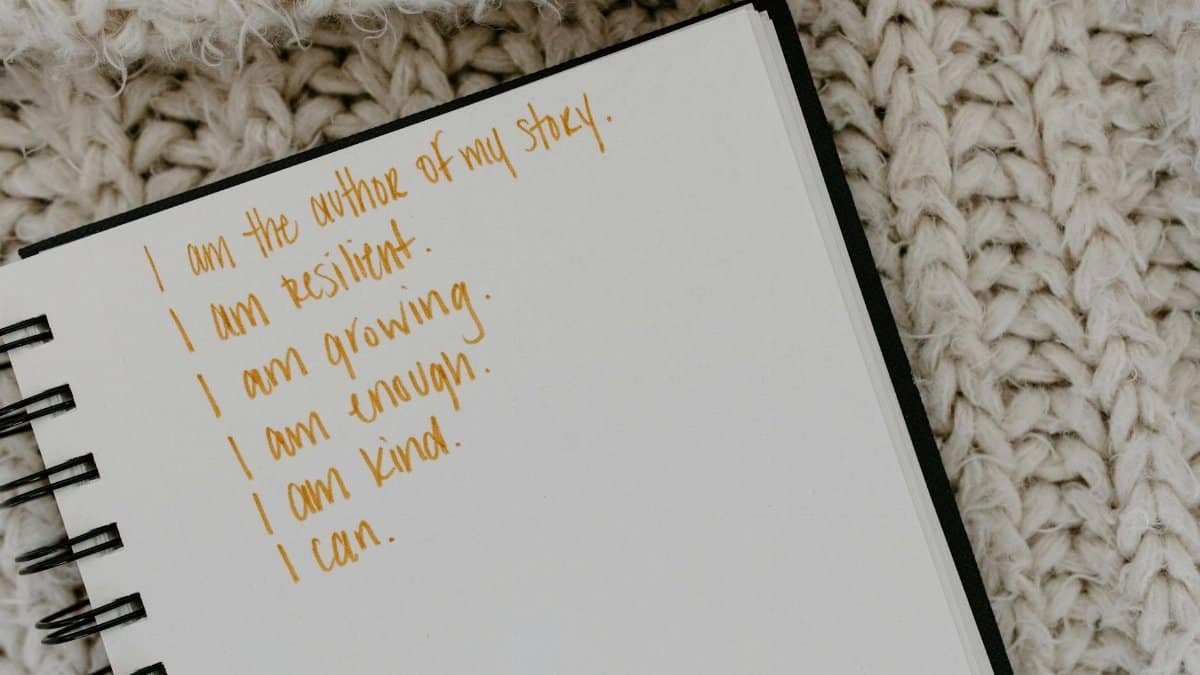A recent study from the American Psychological Association revealed that nearly 40% of Americans report heightened anxiety levels in 2025, up from just a decade ago, often attributing it to relentless digital noise and work pressures. This surge underscores a growing need for intentional mind habits that foster inner calm. What if cultivating simple, daily practices could rewire our responses to stress, leading to profound peace? Enter mind healing habits—routines designed to soothe the mental chatter and restore equilibrium. From gratitude rituals to mindful pauses, these eight habits draw on evidence-based approaches to build resilience. Backed by research, they offer practical tools for anyone seeking serenity amid modern chaos. As we navigate an increasingly unpredictable world, embracing such habits might just be the key to reclaiming our calm.
1. Embrace Daily Gratitude

Start small. Each morning, jot down three things you’re thankful for. This isn’t just feel-good advice; it’s a mind habit rooted in science. Researchers at the University of California, Davis, have shown that regular gratitude practice can lower stress hormones and enhance emotional well-being. Imagine Sarah, a busy teacher in Chicago, who began this ritual during a particularly hectic school year. “It shifted my focus from what’s lacking to what’s abundant,” she shared. Over weeks, her anxiety eased, replaced by a subtle sense of contentment.
But gratitude isn’t always effortless. On tough days, forcing it might feel inauthentic. That’s where nuance comes in—acknowledge the struggle first, then pivot. A study from Greater Good Science Center at UC Berkeley highlights how this practice rewires neural pathways, making positivity more automatic. In 2025, with economic uncertainties lingering, such habits provide a buffer. Try pairing it with your coffee routine; let the warmth of the mug ground you as you reflect. Over time, this builds a reservoir of calm, ready to draw from when storms hit.
Variety keeps it fresh. Some days, express thanks aloud to a loved one. Others, snap a photo of something beautiful. This flexibility prevents monotony, ensuring the habit sticks. As one anonymous online account described, “Gratitude turned my chaotic thoughts into a steady anchor.” It’s not magic, but a deliberate choice that heals the mind step by step.
2. Practice Mindful Breathing

Breath is the unsung hero of calm. Habit #2 restores peace through mindful breathing, a technique that interrupts the cycle of rumination. Picture a harried executive in New York, pausing amid skyscrapers to inhale deeply for four counts, hold, then exhale. In moments, tension melts. This isn’t hype; the National Institutes of Health notes that controlled breathing activates the parasympathetic nervous system, reducing cortisol levels.
Dive into the mechanics. When stress spikes, breaths shorten, signaling danger to the body. Mindful breathing counters this, fostering presence. A report from NIH’s National Center for Biotechnology Information details how just five minutes daily can improve mood regulation. For those skeptical, start with guided apps, but remember, the power lies in consistency.
Yet, challenges arise. Distractions pull focus, or deep breaths might initially heighten awareness of anxiety. Push through gently. One person’s shared experience online captured it: feeling overwhelmed at first, but persisting led to “waves of peace washing over me.” In our fast-paced 2025 landscape, where notifications never cease, this habit carves out sacred pauses. Integrate it during commutes or before bed, transforming routine moments into sanctuaries of rest.
3. Cultivate Positive Affirmations

Affirmations get a bad rap as fluffy self-talk, but when wielded thoughtfully, they reshape mind habits toward calm. Begin by crafting statements like “I am capable of handling this” and repeat them during stress peaks. Evidence from Harvard Medical School suggests this rewires negative thought patterns, boosting self-efficacy.
Consider Mark, a veteran in Texas grappling with post-service unease. He integrated affirmations into his morning mirror routine. Gradually, the internal critic softened. “It felt awkward at first,” he admitted, “but it built a shield against doubt.” A study published in Harvard Health Publishing supports this, showing reduced anxiety in participants after consistent use.
To avoid superficiality, ground affirmations in reality—pair them with evidence from your life. In 2025, amid social media’s highlight reels, this habit counters comparison traps. Vary delivery: whisper them during walks or write them in a journal. The key is belief, nurtured over time, turning fleeting words into enduring peace.
4. Engage in Reflective Journaling

Journaling isn’t just venting; it’s a mind habit that unravels tangled thoughts for clarity. Set aside 10 minutes nightly to pour out worries and wins. This process, as outlined by the American Psychological Association, helps process emotions, leading to better sleep and reduced rumination.
Take Lisa, a nurse in Seattle, who started journaling after long shifts left her drained. Her entries evolved from complaints to insights, revealing patterns in her stress triggers. “It was like talking to a wise friend,” she reflected. Research from American Psychological Association confirms expressive writing diminishes the impact of traumatic events.
Resistance might surface—blank pages intimidate. Start with prompts: “What drained me today? What recharged me?” In our digitally saturated era, this analog act reconnects us to ourselves. Over months, it fosters a calmer mind, equipped to navigate life’s ebbs and flows with grace.
5. Incorporate Nature Immersion

Step outside. Nature immersion as a mind habit invites calm through sensory reset. Whether a park stroll or backyard sit, it lowers blood pressure and quiets mental noise. The Forest Service’s studies show even brief exposures enhance mood and focus.
Envision a family in Colorado hiking weekly; the kids’ chatter fades into birdsong, worries dissolving. Dad noted, “It’s our reset button.” A comprehensive review from U.S. Forest Service links green spaces to decreased depression rates.
Urban dwellers, don’t despair—window views or potted plants count. In 2025’s climate-conscious world, this habit aligns with broader wellness trends. Combine with mindful observation: note leaf textures, wind whispers. Such details anchor the present, healing the mind from overthinking’s grip.
6. Commit to Digital Detox Periods

Unplug to recharge. This mind habit involves designated screen-free times, combating information overload. Pew Research indicates Americans average over 10 hours daily on devices, correlating with heightened stress.
Meet Alex, a software engineer in San Francisco, who instituted evening detoxes. Books replaced scrolls, sleep improved. “I reclaimed my evenings,” he said. Findings from Pew Research Center underscore the mental health toll of constant connectivity.
Implementation varies: start with meals unplugged. Expect withdrawal—boredom might surge, but it passes, revealing inner peace. In a year of AI advancements, this counterbalance preserves human tranquility.
7. Try Progressive Muscle Relaxation

Tense, then release. Progressive muscle relaxation targets physical manifestations of mental strain, promoting deep calm. Clinicians at the Mayo Clinic recommend it for insomnia and anxiety management.
Picture a student in Boston practicing before exams: clenching fists, then letting go, wave by wave. Tension ebbed, focus sharpened. “It melted my worries,” she recounted. Guidelines from Mayo Clinic detail its efficacy in stress reduction.
Adapt for daily life: during commutes or breaks. Consistency builds proficiency, turning it into a reliable calm inducer. Amid 2025’s uncertainties, this body-mind link offers tangible relief.
8. Harness Visualization Techniques

Envision serenity. Visualization involves mentally picturing peaceful scenes, a mind habit that primes the brain for calm responses. Sports psychologists use it for performance; it works for everyday peace too.
Consider a retiree in Florida visualizing beach walks during winter blues. “It transported me,” he shared. A study in the Journal of Clinical Psychology affirms its role in emotion regulation.
Begin guided: imagine safe havens in detail—sights, sounds, scents. Pair with breathing for amplified effects. In our visually stimulated age, this internal imagery restores balance, healing the mind from external chaos. As habits compound, calm becomes the default state.
